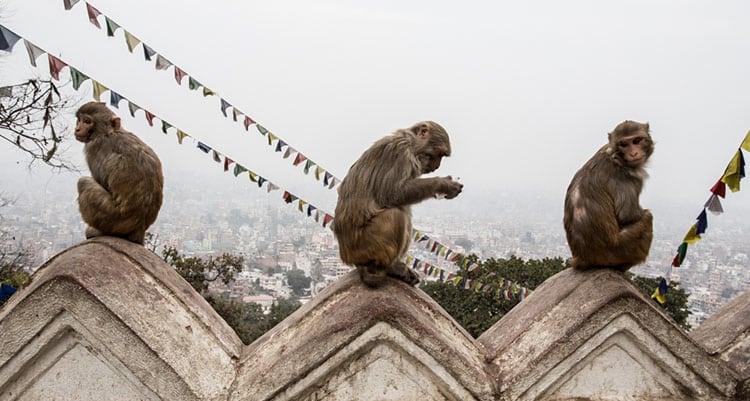Category: Buddhist Path | Recent Meditation Posts

The classic lojong mind training verse, ‘drive all blames into one,’ teaches us how to use blame effectively. Instead of blaming others for our problems, as we often do, it encourages us to look for the one single source of our suffering, our own mind.
Transforming Unfavorable Circumstances onto the Path (Lojong Slogan 12)
Lojong mind training slogans are 59 pith Mahayana Buddhist teachings that help us integrate the steps of the bodhisattva path into our daily lives. Divided into 7 parts, this Tibetan Buddhist practice helps us to develop bodhicitta and live with wisdom and compassion as our guides.
Slogan number 12, ‘drive all blames into one,’ is sometimes weakly translated as ‘drive all blames into oneself,’ for reasons explained below. It is found within point 3 of the lojong mind training verses, ‘Transforming Unfavorable Circumstances by Bringing Them onto the Path.’
Point 1 includes the preliminaries to practice. Point 2, the main practice, trains us in aspiring and ultimate bodhicitta. In Point 3, we are reminded that every experience in our lives, even the unfavorable ones, can be invited onto the path and used as tools to help us awaken.
The value of mistakes in Buddhism, the value of mishaps and unfortunate circumstances, is thus quite different from how we might typically judge these things. When things go wrong, instead of wasting energy pointing fingers, we can use our setbacks as stepping stones. All is fodder for opening our hearts to compassion.
The Habit of Blaming Others
Before we find ourselves on a spiritual path, we tend to operate with an outward-looking focus. We look outside ourselves for happiness, for example, hoping to find it in praise, fame, wealth or pleasure. This habitual external gaze applies when things go wrong, too. With every hurt, loss or pain, we seek someone or something to blame.
The invitation of the bodhisattva path is to turn the mind around, to shift our habitual gaze from one that’s outwardly focused to one that looks within. This is the invitation to ‘drive all blames into one.’ Rather than blaming another person, the weather, or the politics of the time, we turn our blame inward, to the untrained mind. This is not the same as blaming ourselves, an act born of unworthiness and self-judgment. Instead, it is an act of liberation.
Taking Personal Responsibility
The bodhisattva has vowed to take personal responsibility for easing all suffering in the world, including their own. To do this is an extraordinary commitment, requiring a consistent supply of energy.
In our unawakened state, we send energy every which way but to the root of the problem. To ‘drive all blames into one’ consolidates that energy by gathering it all within. Here, in the heart space at the core of our being, is where the real work is to be done.
Driving all blames into oneself is not about self-flagellation or martyrdom. It is a loving goodbye to the small self, the ego-driven self, or as a Buddhist might say, the ignorant self. The one who still believes in trying to cover the whole world with leather, so they can walk pain-free in bare feet. The one who looks within, ready to take personal responsibility, finds it’s much easier to put on shoes.
How To Practice Driving All Blames Into One
To practice driving all blames into one, we bring awareness to the moments of our lives when we think, ‘It shouldn’t be this way.’ When challenges arise, we get curious about how tightly we are holding on to our expectations, our righteousness, or the illusion of control.
It’s not the barking dog that’s to blame for my disquiet, but my reaction to it. I could yell at the dog, but there would only be more barking. I could yell at the owner, I could call the police, but tomorrow there may be another barking dog. Addressing my own reactivity is the only lasting solution for protecting my peace of mind. Those who love that dog seem not to even hear the barking. The annoyance, then, is not coming from the dog, but from me.
And so we drive all blames into one, meaning we open our heart and ask, ‘How is this challenge providing me with an opportunity for liberation?’ The barking dog shows me where I’m still waiting for the outside world to be at peace before I can be calm within. It’s a reminder that I’m looking in the wrong direction.
And so, I bring the dog onto the path with me. No longer the source of my suffering, the dog has become my teacher. I use it as a call to return to my practice. I shift the blame, energy, anger and annoyance from the dog to my own untrained mind. Only then does real change begin.

